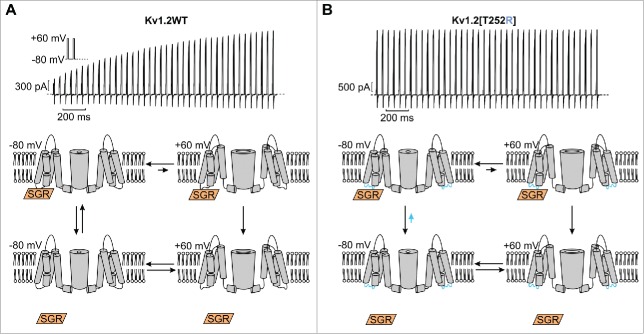Figure 1.
(A) Hypothetical model for interpretation of use-dependent activation of Kv1.2 channels. (A,B) Traces in the upper panels illustrate behavior of Kv1.2 and Kv1.2[T252R] channels in response to repetitive 10 ms depolarizations between −80 mV and +60 mV, with a pulse-to-pulse interval of 50 ms. (Lower panels) The gating scheme depicts a proposed model depicting an extrinsic ‘soluble gating regulator’ (SGR) which binds Kv1.2 preferentially in the closed state (potentially in the S2-S3 linker). Upon depolarization, binding affinity for the channel is reduced, causing it to unbind, leading to disinhibition of channels. In Kv1.2[T252R] channels, we propose that binding of the SGR is reduced or abolished, causing channels to largely dwell in the potentiated state (unbound, lower tier of gating scheme).

